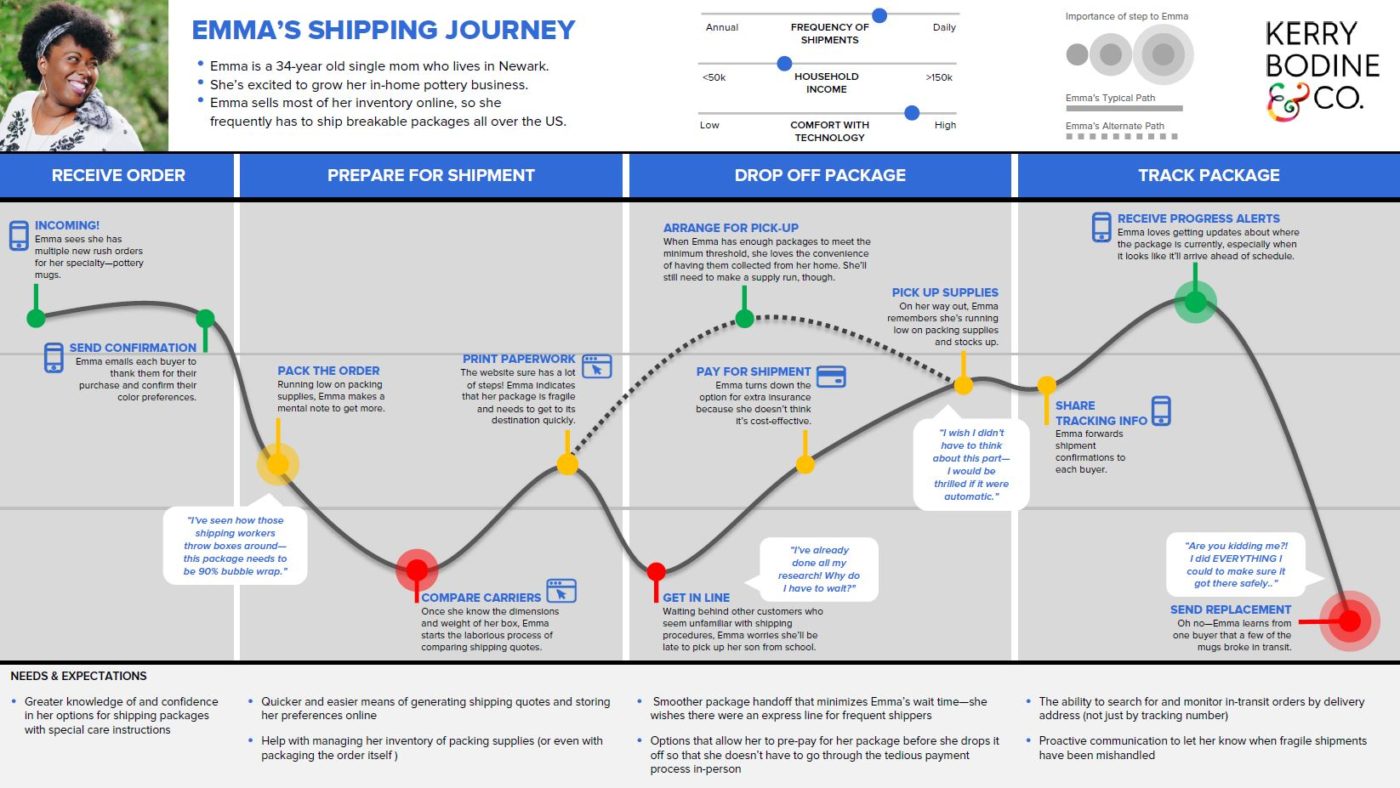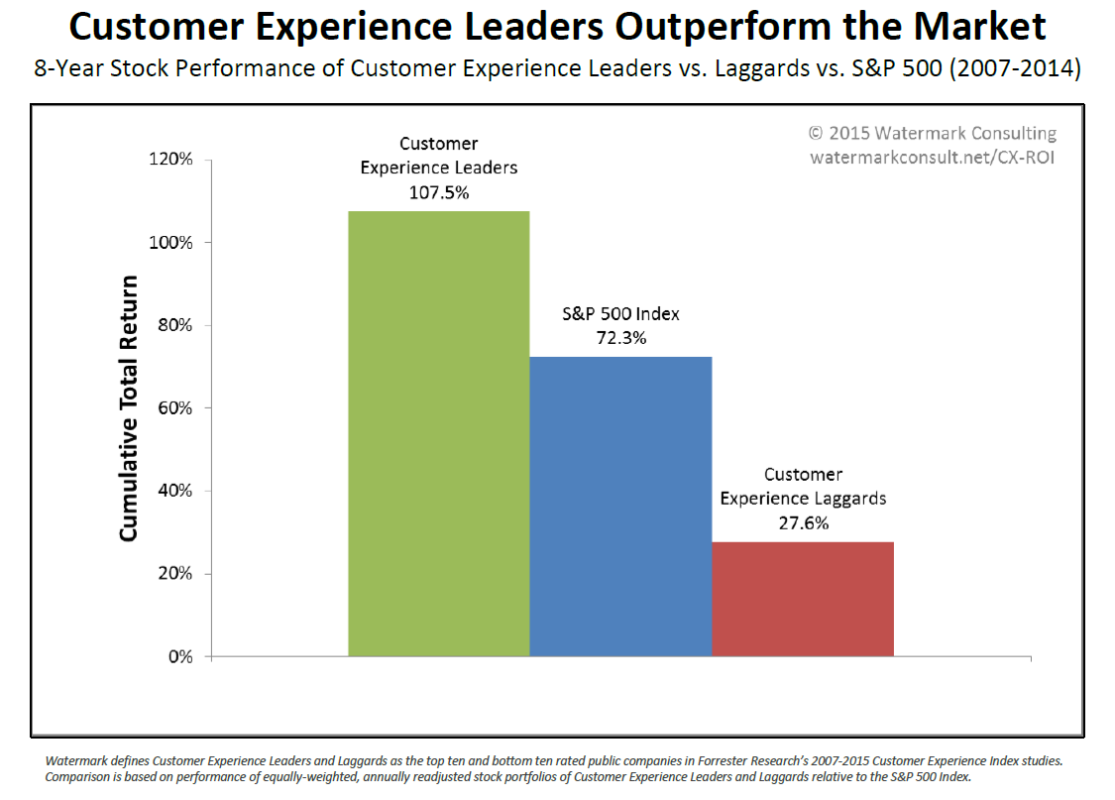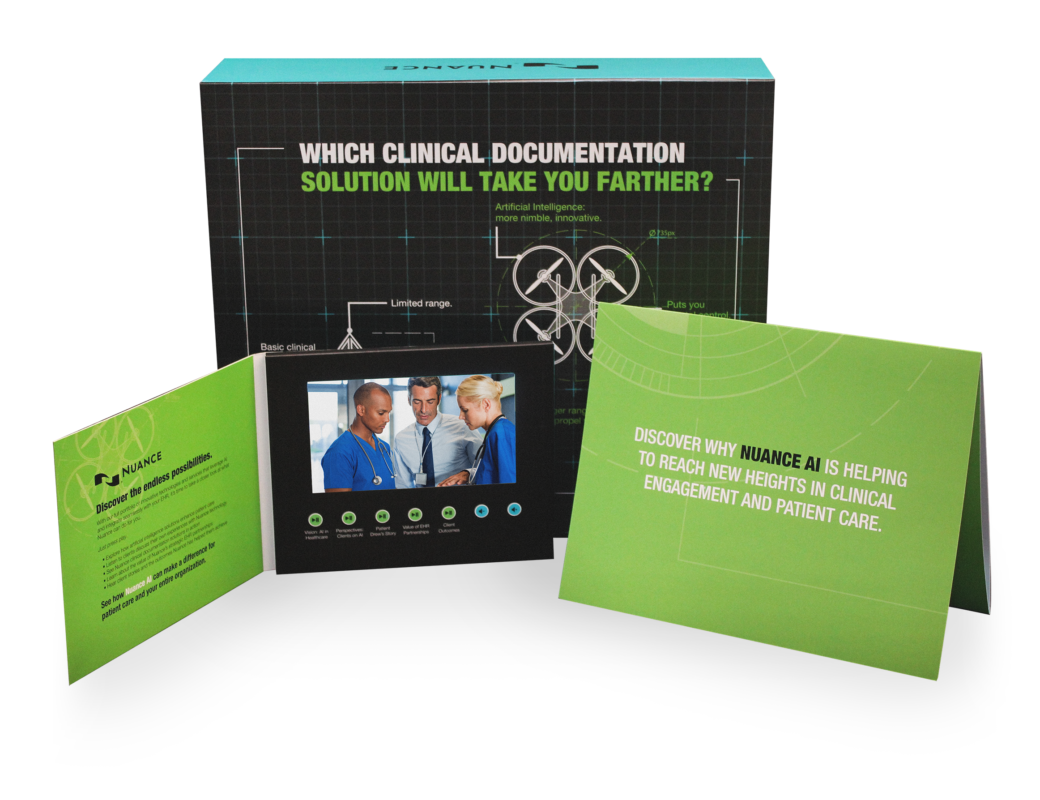For several years Jon Picoult at Watermark Consulting has taken the results of Forrester’s survey and correlated them with shareholder value.He has found that the stock of public companies that rank high for customer experience significantly outperform both companies with poor CX and the market in general, and typically the companies that provide poor customer experience underperform the market. (graphic used with permission of Watermark Consulting)
Give customers what they want, and they’ll give you what you want.
Ways to sell more to current customers
Here are some ways you can market and sell more to your current customers.
Salespeople
Many companies split sales responsibilities between “hunters,” whose job is to close new accounts, and “farmers,” who are responsible for growing existing accounts.
The two roles typically represent two different sales personalities.
The farmers are concerned with long-term relationships. Farmers build on the initial customer relationship to learn more about what the customer needs, and how the vendor can provide it. Farmers know that the relationships that they’re building may take months or years to produce results. Many hunters would not accept sales timeframes of that length.
Farmers want to take care of “their” customers, and they want the internal resources to provide solutions to do that.
Of course, people are not so easily split into two types. Hunters often need a bit of farmer in them to truly understand prospects. And farmers need a bit of hunter in them to build on the initial engagement and expand into other parts of the company.
Call them what you will, the important thing is that you have people in your organization who have an explicit responsibility to grow current accounts, and that they have the tools to do so.
Website
Your website is a great way not just to gather insight into what customers want but also to engage with them, support and upsell them.
Using a marketing automation program, you can track what customers are looking at down to the individual. Analyzing these interactions across all of your contacts in an account may give the “farmers” in your company insight into what an organization is looking for now (see more on the role of sales in account based marketing below).
If you have a customers-only section to your website, requiring registration and login, you can provide custom content there. You could even have private, branded portals for your most important customers. Many companies crowdsource their support function to an online community of customers answering questions for one another in a knowledgebase; the company may even give an annual award to the customer who provides the most frequent/best advice.
FAQs are exactly what they say they are: answers to your most frequently asked questions. Use FAQs to answer the questions that you hear over and over from customers.
And once people have visited customer-only pages, you could target them with remarketing ads about customer-only events and offers.
Email
Just as email is a powerful channel for customer acquisition, it can also be central to customer satisfaction, retention, and growth.
The first step in using email to sell more to existing customers is to create segments in your lists for them. You need, at a minimum, several email segments such as Contacts, Active Prospects, and Customers, but you may also want even more granular segments based on other customer characteristics such as what or how much they’ve bought in the past, geography, or whatever other factors are important in your company.
Ecommerce companies with large lists create RFM cells based on Recency (how recently a person bought), Frequency (how often they buy) and Monetization (their average purchase). Using a 1-5 scale for each of the three factors, with 5 being the best, they can create 125 or more cells of current customers and test frequency of emails and different offers with each cell to maximize profits.
Create unique content for your customers. Customers need a different webinar than your prospects. If I’m a long-time customer, I don’t want to get the email offering 25% off the first year to new customers. Why, I might wonder, are your newest customers getting this, but not your most loyal ones?
So you need to segment and understand what messages and content will be most meaningful for existing customers.
Newsletters are just a special type of email, and they can be valuable for increasing sales to current customers. The mistake that many companies make is using the newsletter to talk about themselves (We have a new logo! We have a new customer!). Fill your newsletter full of information that adds value for your customer; sometimes that’s as easy as refocusing an article from “this is what we did for a customer” to “this is what this company achieved (with our help)”. Make the customer the hero of your stories.
Social Media
As I’ll discuss in chapter 16 on social media, social media is not a great customer acquisition channel for most companies – at least not as good as email and many other programs.
Social media can play a significant role in growing existing accounts, though.
First, even without a significant following, you can listen to the conversation about your company and your competitors on social media to understand what customers like and dislike about you and them, and then react to those insights and individual comments.
Social media properties, especially on Facebook and Twitter, can be central to a company’s customer support. Some companies have social media “support” accounts separate from their main accounts. Two keys to successful social media customer support are (1) quickly respond to customers who post there, and (2) immediately take the issue offline. You don’t want a long, potentially embarrassing exchange to live forever on social media.
And you can use YouTube for customer support by posting videos demonstrating how to use and fix your products.
Events
In-person events are one of the strongest brand building activities, and B2C companies may even sell a significant amount of products at one. In our increasingly digital world, the personal touch means even more.
Whether B2C or B2B, many companies have held successful events such as:
- grand opening of a new facility
- notable anniversary of being in a location
- participating in a local community festival/event
- annual users conferences, especially for B2B and tech companies
- hosting local events for affiliate groups, such as:
- a bike shop hosting weekly rides and free repair clinics
- bookstores hosting authors’ readings
- tech companies hosting meetings for startups.
Every element of an event is part of the customer experience including the invitations, venue, decorations, music, food, activities, Wi-Fi and follow-up. Make it memorable, and on brand.
You can also provide online and virtual events, of course, such as webinars. And combine the physical and digital with augmented reality.
Loyalty Marketing
You don’t need to be an airline (miles) or credit card company (points) to reward your customers with a loyalty program.
Dry cleaners provide discount coupon books to their best customers.
Bookstores and pizza shops provide loyalty cards so that after 8 or 10 purchases the next one is free.
CVS uses data to personalize the discount offered to each customer on the checkout receipt. If a customer’s average purchase is, for example, $20, CVS may offer a discount if they spend $30 or $40. If their average purchase is $40, though, the starting point for the discount may be higher.
Bertucci’s offered diners contest cards that could only be redeemed on a future visit.
You can use email and text messages to alert customers to these special offers.
Text messages
Text messaging lets you take advantage of the platform in your customer’s pocket and purse: their smartphone. Over 95% of texts are read. Can you claim that for your other marketing channels? (Text messaging is also called SMS, which means “Short Message Service”.)
I could have put text messaging in another chapter, or made it an entirely separate chapter, but it makes the most sense to use texts to reach existing customers who already trust you and are willing to give you their mobile phone information. Of course, the very first thing you need is permission from people to text them. Legally you need to get people to opt-in to text messages before sending them.
Text messages may be especially effective for retailers and other B2C companies. They may boost sales with timely texts such as “Show this message to get 20% off today on… [how should this be formatted?]
snow shovels before the storm hits
or
fall fashions that have just arrived
or
food on your way home from work
You also can use texts to improve your customers’ experience and bind them closer to you. For example, you can use text messages to let customers know the status of their order, and to confirm an appointment.
Use common sense, of course. Don’t send texts in the middle of the night (be especially careful about this if the people you’re texting aren’t all local). Too many of us sleep with our phone near our bed and don’t want to get woken at 3 am with a commercial message.
If you’re new to text messaging, it may seem uncomfortable or intrusive when you first do it. But if your customers have given you permission, go for it.
Account based marketing
Account based marketing (ABM) is basically a new name for a B2B strategy that has been around forever under such names as key, strategic, or target account marketing. Rather than casting a wide net for new customers, as is done with much marketing, ABM is sometimes referred to as “spear fishing” – focusing personalized marketing on perhaps just a few dozen especially large, important accounts. While it can be used to land new accounts, ABM is especially effective for growing your most important existing accounts.
ABM requires deep cooperation between sales and marketing in terms of:
- identifying the most important accounts and most important people on their buying teams
- understanding the personas
- developing personalized content that speaks to that particular company’s issues
- getting it to people at the right time.
Helpful content created by marketing is valuable in educating the people at the target company and creating at least interest if not preference for the vendor. And with ABM you direct the content toward those individuals rather than waiting for them to find it. Late in the selling process sales reps may need to tell marketing to take an individual out of the marketing program altogether so they don’t get inappropriate messages that don’t really apply to where that person is now.
A major role of marketing in ABM is the development of the personalized content, which may take considerable effort for each company. If it’s possible in the vendor’s business, an effective tactic can be to send the prospect a one or two-page benchmark summary of their company’s performance, or some other highly personalized content, and suggest a competitive analysis as a foot-in-the-door next step. It’s hard for companies to ignore competitive information. Some vendors use expensive and creative dimensional mailers to gain the attention of people in target accounts, or one-to-one personalized events. Companies may need a drip program of several pieces of personalized content to get the desired meetings.
For example, voice recognition leader Nuance wanted to open C-suite doors for its sales reps to sell their documentation artificial intelligence solutions into new hospitals and other healthcare organizations. Their agency, King Fish Media, created this very cool 3D interactive mailer that included a role-specific brochure (for chief financial officers, chief information officers, and chief medical information officers – three different personas), an interactive book with video clips… and a drone! The personalized letter included a link to an account-specific URL. This package successfully opened a lot of doors for sales people.




